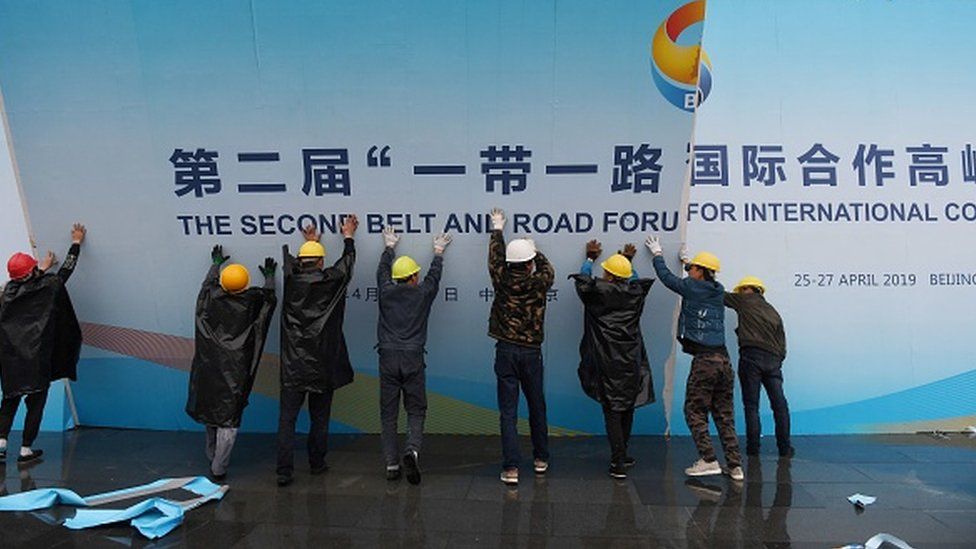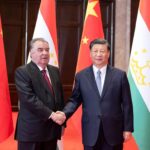A new transport corridor announced on the sidelines of the G20 summit in Delhi will become the basis of world trade for hundreds of years to come, Indian Prime Minister Narendra Modi said in a recent radio address. Can it really?
US President Joe Biden and Saudi Crown Prince Mohammed bin Salman upgraded their frosty relationship from an awkward fist bump last year to a firm handshake as they announced the India-Middle East-Europe Economic Corridor (IMEC). (Biden had once vowed to make Saudi Arabia a global pariah.)
The project launched to bolster transportation and communication links between Europe and Asia through rail and shipping networks, while beneficial for the region, was also telling of American foreign policy, “which, to put it simply, is anything that would further US interests against China,” Ravi Agarwal, editor-in-chief of Foreign Policy magazine told the BBC.
America does not benefit materially from being part of the project, “but this can be put in the category of the Japan-South Korea summit at Camp David,” says Parag Khanna, author of Connectography. The US marked its diplomatic presence at the presidential country retreat by brokering a thaw in the relationship of the two pacific nations in the face of growing Chinese expansionism.
The IMEC is also being seen by many as a US counter to China’s Belt and Road Initiative (BRI), a global infrastructure-building project that connects China with Southeast Asia, Central Asia, Russia and Europe.
Are comparisons with BRI justified?
This year marks a decade since President Xi launched the BRI.
Some say the project’s grand ambitions have dwindled significantly, as lending to projects has slowed down amid China’s economic slowdown. Countries like Italy are expressing their desire to withdraw, and nations such as Sri Lanka and Zambia find themselves caught in debt traps, unable to meet their loan obligations.
BRI has also faced criticism for numerous other reasons from its “underlying objectives of gaining strategic influence through developmental footprint… aggressively linking different regions with Sino-centric value chains, inadequate attention to local needs, lack of transparency, disregard for sovereignty, adverse environmental impact, corruption, and lack of sound financial oversight,” Girish Luthra, a fellow at the Observer Research Foundation think-tank wrote in a recent paper.
Despite the hiccups the Chinese have achieved a “staggering amount” and IMEC isn’t even close to being a “rival” says Mr Khanna, adding that it can at best be a moderate volume corridor.
“It is not a game changer on the scale of BRI. It is a good announcement but you don’t look at the proposal and say, oh my god, the world can’t live without it,” Mr Khanna told the BBC.

You can see why.
China has a 10 year head-start with BRI with total investments under the initiative crossing an eye popping $1 trillion this July. Over 150 countries have joined as partners, which as Mr Luthra writes has significantly expanded its geographical scope “from a regional to a near-global initiative.”
IMEC isn’t the first effort by the developed west to use infrastructure as a counter to contain China’s growing footprint.
The G7 and US launched a Partnership for Global Infrastructure and Investment in 2022, aiming to mobilize $600bn in global infrastructure projects by 2027. The Global Gateway is the EU’s answer to BRI.
Neither match its scale or ambition. However the fact that the past five years have witnessed a surge in these projects in response to China’s initiative is evidence that BRI has been a “global economic multiplier,” says Mr Khanna.
Some analysts caution against exclusively viewing IMEC through the lens of opposition to the Belt and Road Initiative (BRI), suggesting that such a binary perspective may not be fruitful.
Its formation gives a further boost to the ongoing trend of transactional partnerships, where countries engage in collaboration with multiple partners simultaneously. “Most countries these days tend to participate in multiple fora and alliances,” says Ravinder Kaur, a professor at the University of Copenhagen.
Devil in the detail
IMEC’s memorandum of understanding document is thin on detail but an action plan is expected in the next 60 days. As of date all it has done is map out the potential geography of a corridor.
Making it happen will be enormously complex. “I’d like to see an identification of key government agencies who will underwrite the investments, the capital each government will allocate, and the time frames, says Mr Khanna.
A new customs and trade architecture will also be need to be put in place to harmonise paperwork, he adds, giving the example of the Trans-Eurasian railway through Kazakhstan that passes through 30 countries. “That transit is seamless. You need clearances only at the beginning and end of the journey. We don’t have this with IMEC.”
Then there are also the obvious geopolitical complexities of navigating ties between partner countries such as the US, Israel and Saudi Arabia who often don’t see eye to eye. It wouldn’t take very much for tactical cooperation of this kind to go awry, say experts.

The IMEC will compete with the Suez Canal, the sea-level waterway in Egypt used to transport freight between Mumbai and Europe. “To the extent IMEC improves our relations with the UAE and Saudi Arabia, it will hurt relations with Egypt,” economist Swaminathan Aiyar wrote in his column for the Times of India.
Transport by sea through the Suez Canal is also cheaper, faster and considerably less cumbersome. “It may make excellent political sense, but it goes against all the tenets of transport economics,” Mr Aiyar adds.
But IMEC’s ambitions transcend the narrow scope of trade and economics to include everything from electricity grids to cybersecurity – building on conversations that have taken place in security forums like the Quad, points out Navdeep Puri, a former Indian ambassador to the UAE in a column for The National News.
“If the lofty ambitions outlined in New Delhi can become a reality, they would make a singular contribution to a safer, more habitable planet. For now, let’s live with that hope.”
Source: British Broadcasting Corporation








































